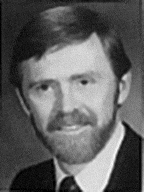


Editorial
Editorial

Most of this issue of the Newsletter is devoted to clearing a back log of meeting reports. Although 1995 marks the 100th anniversary of the discovery of X-rays, it is not really my intention to turn the newsletter into a review of recent history (i.e. Crystallographic meetings held last year). I greatly appreciate the time that crystallographers from around the world have taken to prepare meeting reports, news items, and feature articles. The reports reflect the vitality of the field and its application to a broad spectrum of materials. I deeply regret the delay in their publication.
Because the Newsletter is underwritten by the IUCr and has no source of support other than advertising, it is necessary to control costs by reducing the size of this issue exacerbating the back log problem. I hope that we are able to build a large enough base of advertisers so that we can manage to print all the crystallographic news that is fit to print and that the IUCr can afford to print. If you value the newsletter, please express your appreciation to the advertisers and the members of the IUCr Executive Committee that make it possible. If we must cut back, I would appreciate input from you the readers on what to keep and what to cut. What do you want in the Newsletter?
The 1996 Congress
Robert Bryan, General Chairman of the 1996 IUCr Congress and General Assembly, which will be held in Seattle, Washington, August 8-18, 1996, is pleased to report that five Nobel Laureates, Johann Deisenhofer, Herbert Hauptman, Jerome Karle, William Lipscomb, and Clifford Schull, have agreed to be Honorary Chairmen of the Congress.The list of topics and categories of the 1996 Congress has undergone another revision. The list that appeared in the last issue stimulated Ian Robinson, Helmut Klapper and others to expand the titles in the areas of surface study, crystal growth, and diffraction physics. Further suggestions are still welcome. It is to be hoped that the number of topics will not expand to the point where it exceeds the number of participants.
While this list of topics and categories will be used to organize submitted papers, poster sessions and contributed oral sessions, it is distinct from the microsymposia program that the Program Committee will organize by August 2-4 based upon the suggestions already received from the National Committees, IUCr Commission chairs and members, Program Committee members, and interested individuals. While there will be overlap between the microsymposia topics and list of topics and categories, the latter will be much more extensive.
Corrections
Lodovico Riva di Sanseverino writes to clarify that the award given to the most dynamic young participant at the Erice Conference, mentioned in Vol. 3, No. 1, page 18, was the "Erice Vaciago Award for 1994". The award was named for Alessandro Vaciago, whose devotion to nurturing young crystallographers was vital to the Erice spirit in its early days. James Phillip points out that it is the Siemens company that has led the way in exhibiting their diffractometers at the US Protein Society meetings since 1993.
Careers
There is a great deal of concern being expressed in the US about a surplus of PhD scientists. The Young Scientists group of the ACA organized a session in Montreal featuring a talk entitled "The Best of Times, The Worst of Times: Post Docs in the 90s". Much of the discussion in the scientific press seems to accept the hypothesis that due to limited resources, it will be necessary to "downsize" the scientific community either by training fewer scientists or urging them to work in fields other than the one for which they have been training (and presumably for which they have a genuine interest, enthusiasm and talent). The segment of the US work force that is growing most rapidly is that of personal service and fast food chains. Do we really want to urge young people to get a PhD in Physics or Chemistry so that they can manage a Burger King franchise?
It is truly disheartening to listen to a growing chorus of political and scientific leaders suggesting that it is a good idea to educate fewer people. We do a disservice to science by expressing such a philosophy. There is so much that we do not know and so much that crystallographic analysis can help us to understand that we should be advocating expanding, not restricting, education and training.


